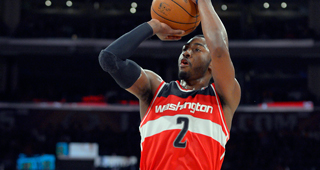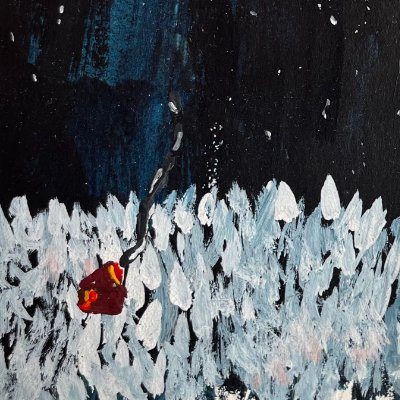The double-threat backcourt has a powerful allure. If most people’s concept of an ideal basketball aesthetic involves lots of fluidity and spacing, guards are more likely to supply that than any of other players on the floor. Pairing two skilled ones who can shoot, pass, and handle the ball would seem to produce a surfeit of dynamic play: forever replenishing waves of defense-unsettling drives and jumpers wearing away at the opposition.
So why does that approach so infrequently succeed? Few great teams in NBA history have featured two-star backcourts. The present-day Warriors have one and you could argue the Bad Boy Pistons did as well, provided you don’t think too hard about the talent gap between Klay Thompson and Joe Dumars, but those two squads, if they’re not the only members, are part of quite a short list. Tony Parker and Manu Ginobili were a force in their primes, but the Spurs run a decentralized offense that has never revolved around either of them so much as it has made the most of their strengths. Steve Nash’s best-ever backcourt-mate in Phoenix was a young, still-developing Joe Johnson and Jason Kidd’s couple of seasons flanked by Vince Carter didn’t produce much. The Gilbert Arenas and Larry Hughes Wizards were fun but didn’t threaten the Eastern Conference elite. Kobe didn’t want or need a good point guard. Chris Paul requires nothing more than a spot-up shooter at his side. Magic was happy to have Byron Scott, but Kareem and James Worthy were more important.
Of the current league’s non-Warriors backcourts, only one is truly soaring. The Raptors, if they haven’t yet and might not ever figure out how to overcome LeBron’s Cavaliers, have at least reached peak efficiency in terms of DeMar DeRozan and Kyle Lowry becoming the best versions of themselves. The late-prime leap Lowry made last season has held, and his three-point shooting and assists numbers are even a smidgen better than they were a year ago. This isn’t remarked upon enough perhaps because he plays in Toronto but Lowry has transformed himself from a talented nomad whom basketball dorks had a simmering affection for into the co-leader of a 55-win team. It’s been a slow, understated, Mark Ruffalo-esque build toward stardom for him.
DeRozan, meanwhile, is out of his mind. This can’t persist for an entire season because the universe simply doesn’t allow such things, but he’s scoring 28 points per game on 48 percent shooting as if the defenders contesting his spinning and pull-up and fadeaway jumpers aren’t on his astral plane. Though he’ll cool off at some point, it’s not beyond the realm of possibility that DeRozan has found a new gear at 27. For a while now, he’s quietly bristled at the notion that he’s no Jimmy Butler or Klay Thompson. It’s inspiring when a player begins to live up to his own outsized estimation of himself.
The Wizards and Blazers should be replicating something like the Raptors’ success but instead they’re struggling for their own distinct reasons. Dame Lillard has done an admirable job integrating C.J. McCollum into the Blazers offense, occasionally ceding possession and fading into spot-up duty so the Lehigh alum can work from the top of the key, but the two guards are too similar to fit together perfectly. They both need the ball to be effective and neither of them are natural distributors. The Blazers get stuck in monotonous, your turn-my turn ruts for extended spells. Complicating all of this is the fact that Lillard and McCollum are awful defenders who puts considerable strain on Portland’s frontcourt, which lacks rim protection in the first place. The Blazers got some buzz and some confidence on the back of a brief, brave playoff run last season, but now they’re reckoning with a conundrum: what do you do when the strength of your team is also sinking you?
At least Lillard and McCollum like each other. The Wizards are having a season from hell and the most troubling aspect of it is that John Wall and Bradley Beal can’t get along. They pretty clearly don’t like each other. It bothers Wall that Beal makes more money than he does and Beal resents Wall for treating him like a sidekick (even though, to be fair, that’s what he is). That noise is a little quieter than it was this past summer because Beal has been reasonably healthy and is shooting well, but he and Wall still aren’t the tandem they should be and Wall looks to be unraveling after suffering through one too many seasons of futility in Washington. Beal bumping up his percentages a bit during a year when the Wiz are cratering brings him no solace. Ernie Grunfeld and company need to seriously examine dissolving the partnership or even getting rid of both players, especially given that Beal, while still just 23, is probably one more extended injury break away from putting a sizable dent in his trade value.
A lot of team construction conventional wisdom is built on precedent and precedent is an illusorily robust justification: stuff happens the way it always has until it doesn’t anymore. But perhaps history is correct in some metaphysical sense and it actually is exceedingly difficult to build a winner through the backcourt. For the Warriors to pull it off, they needed two all-time shooters and a great team around them. The Raptors, as confident and kinetic as they are, have slim title hopes. Regardless, the idea of destroying the rest of the league with speed and finesse has an enduring appeal. Making it work, on the other hand, remains a demonstrably steep climb.



